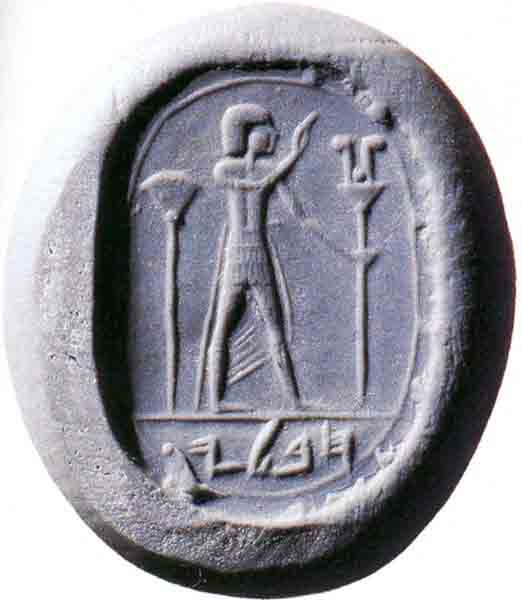Image Details

Zev Radovan/Hecht Museum, Haifa, Israel
Random resemblance? This impression, made by an eighth-century B.C.E. amethyst seal, is strikingly like the Hoshea seal (see impression). The amethyst seal is inscribed in the exergue with the name of the owner, Habli. So close are the similarities in design and craftsmanship—the skirted figure, the papyrus scepter, the Egyptianizing style, the wigs—that André Lemaire concludes the two seals were probably made in the same workshop in Samaria, then the capital of Israel, and possibly even by the same artist.
Comparison of these two impressions reveals why Abdi’s inscription runs down both sides of the figure, rather than being confined to the exergue, as was the normal practice (and as was done on Habli’s seal). Apparently, Abdi wanted not only his name but his position (servant of Hoshea) inscribed on his seal; because there wasn’t enough room in the exergue, the artist placed a decorative winged disk there and inscribed Abdi’s name and title into the main part of the seal’s design.
